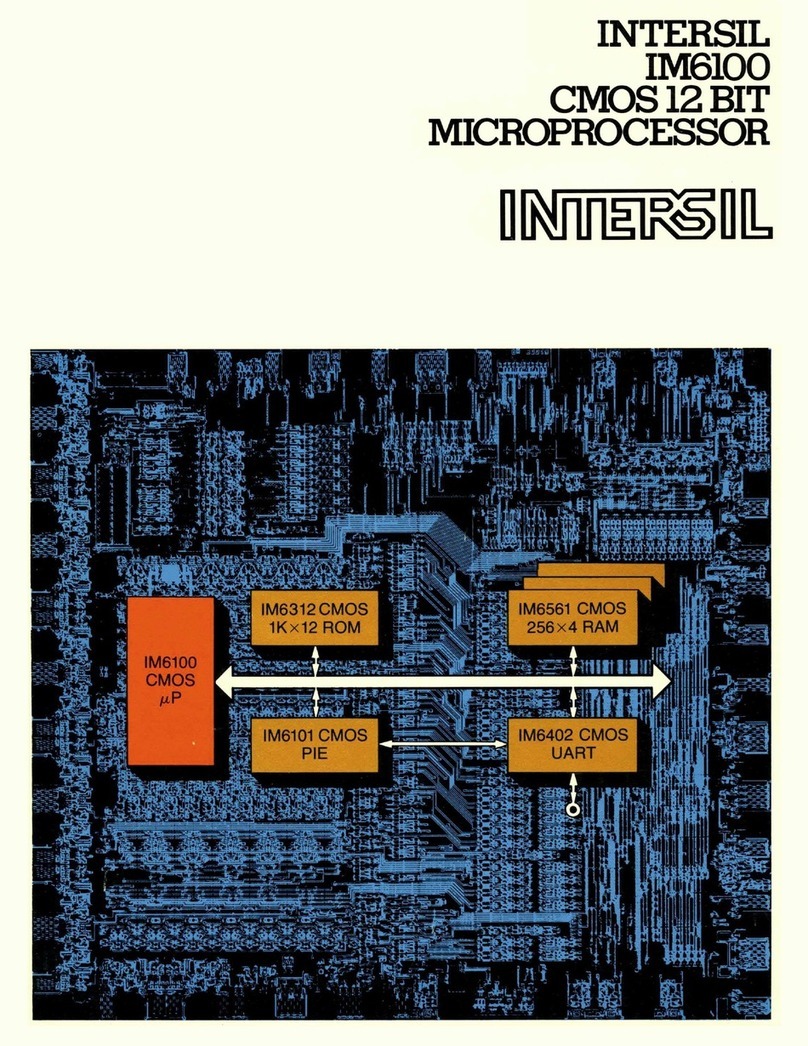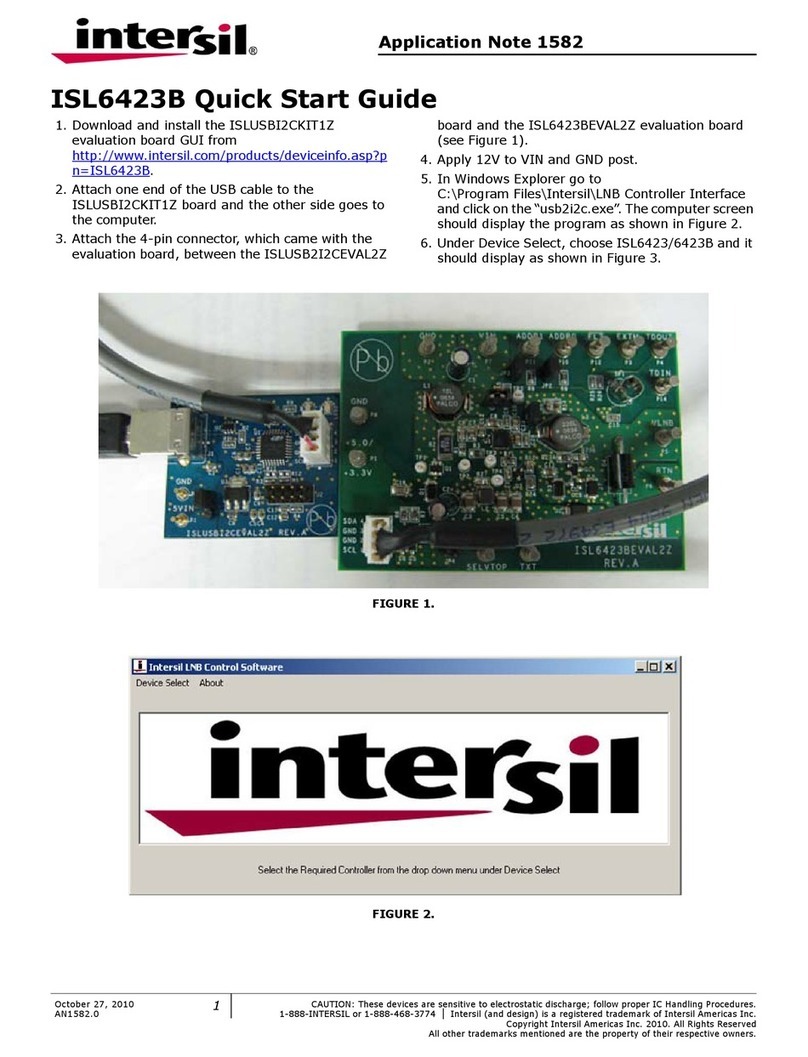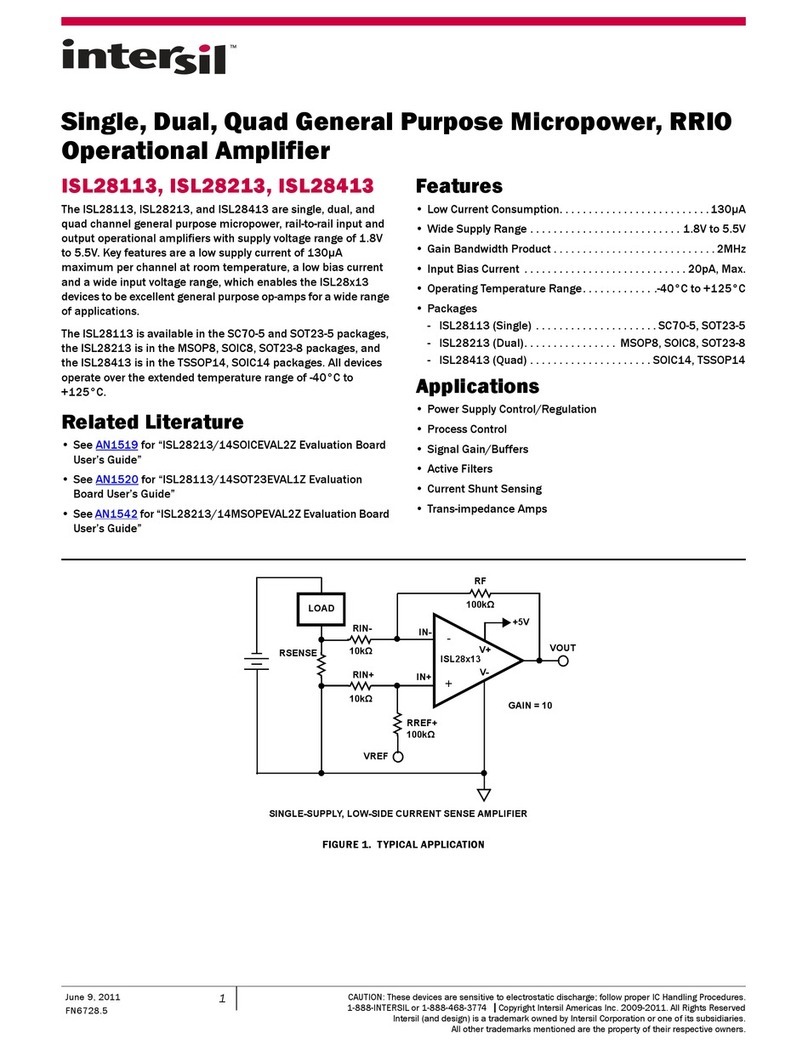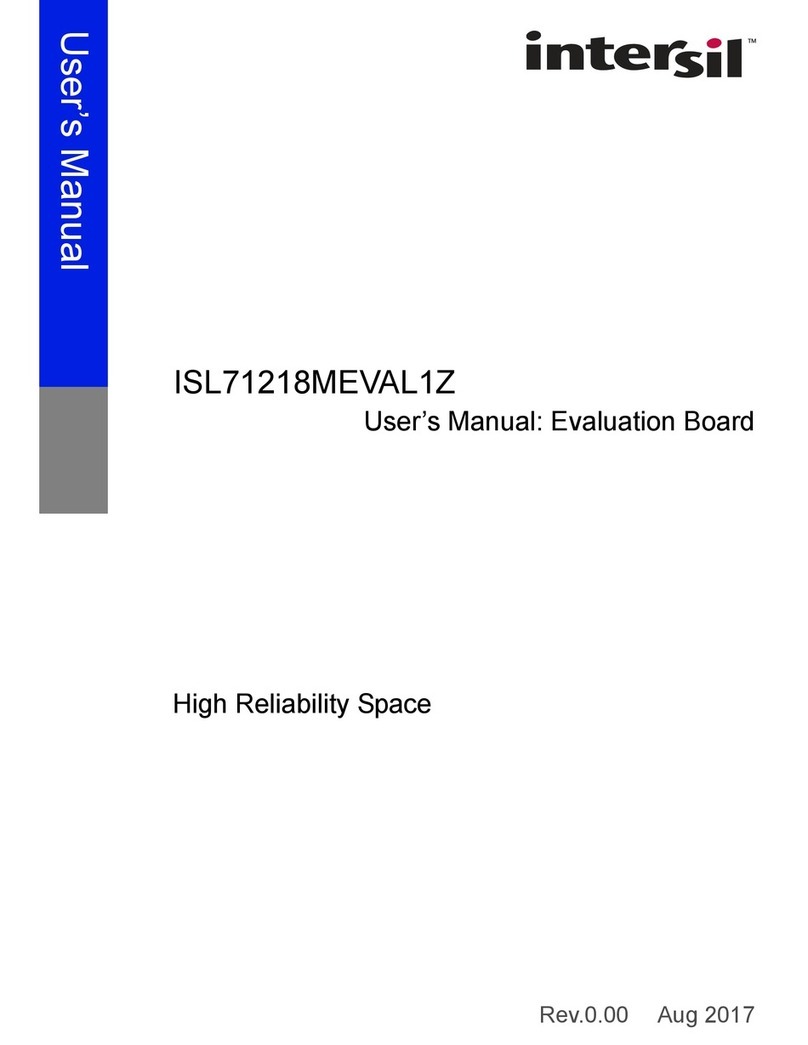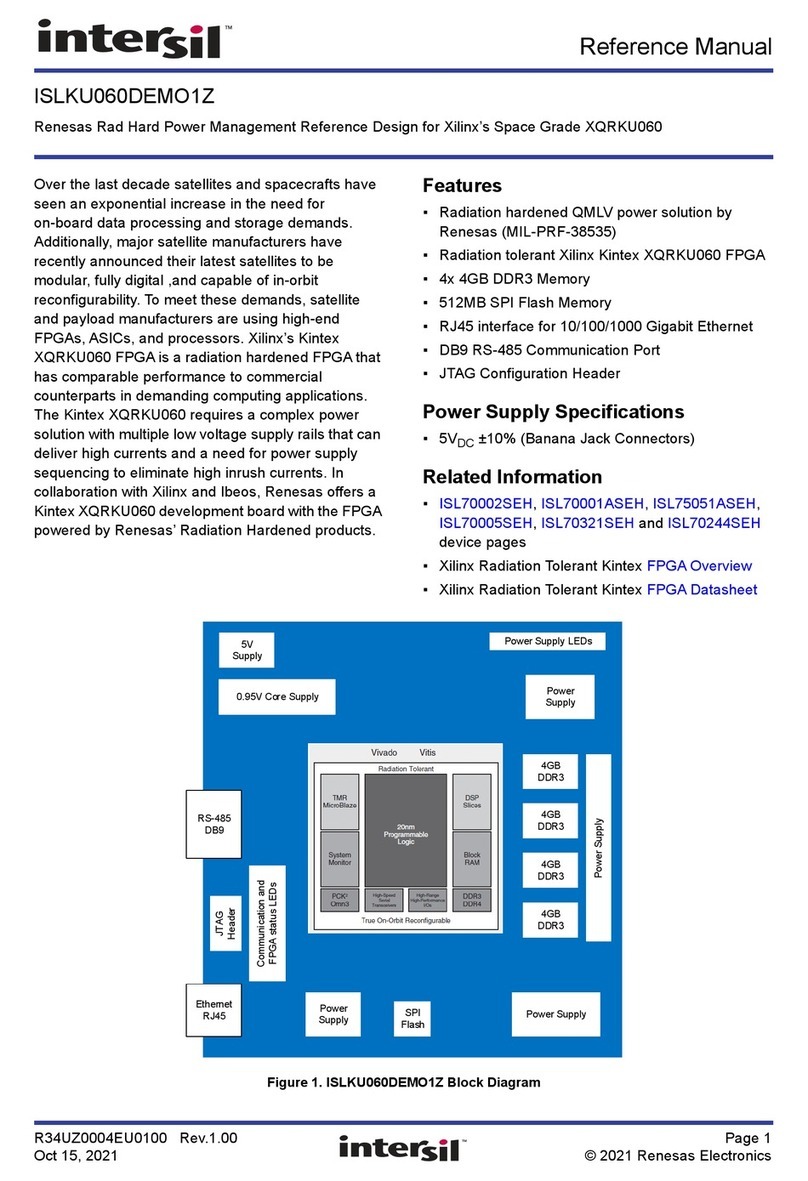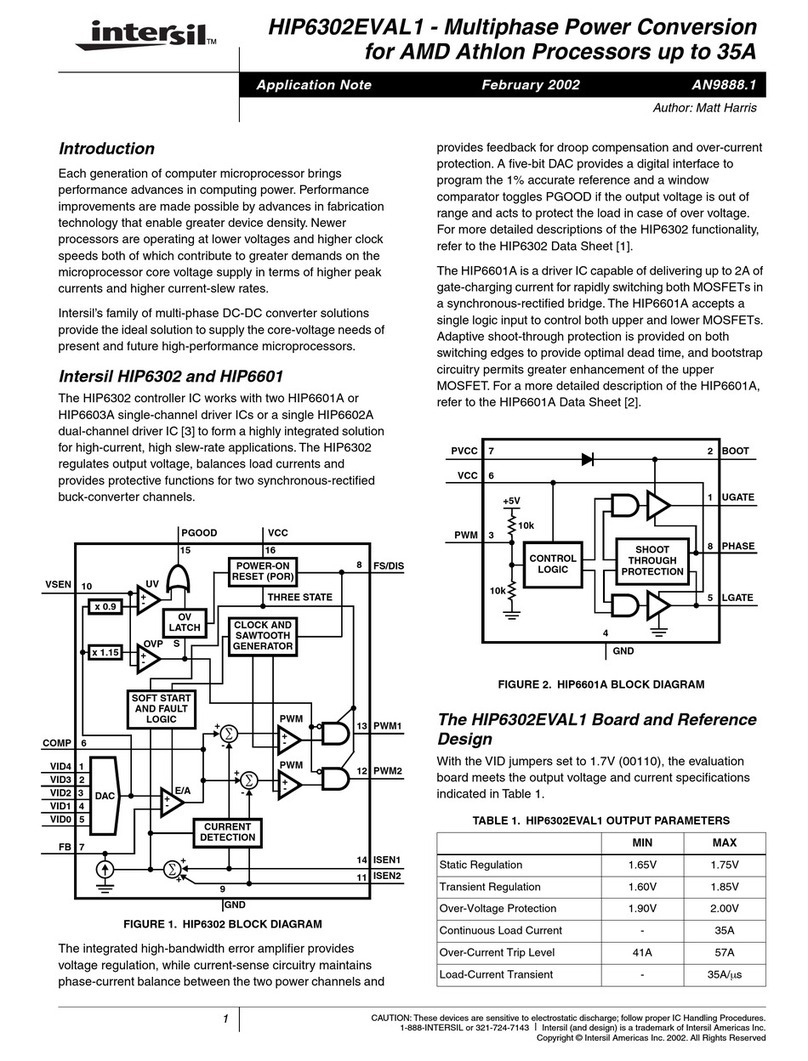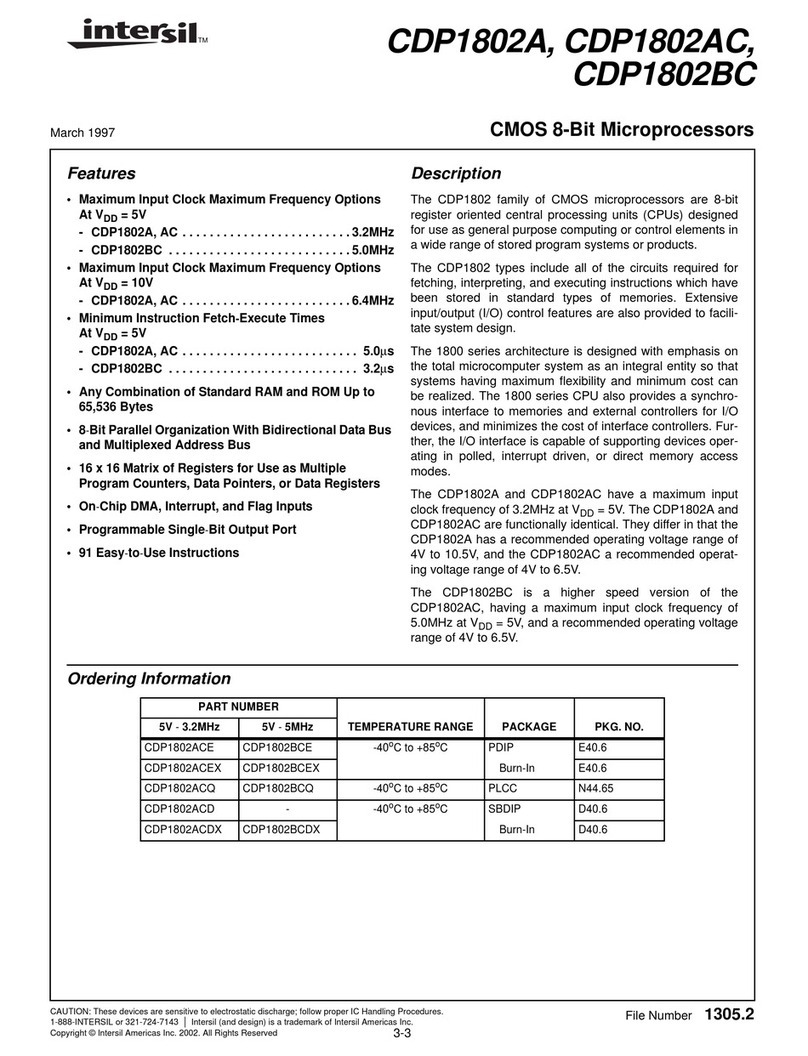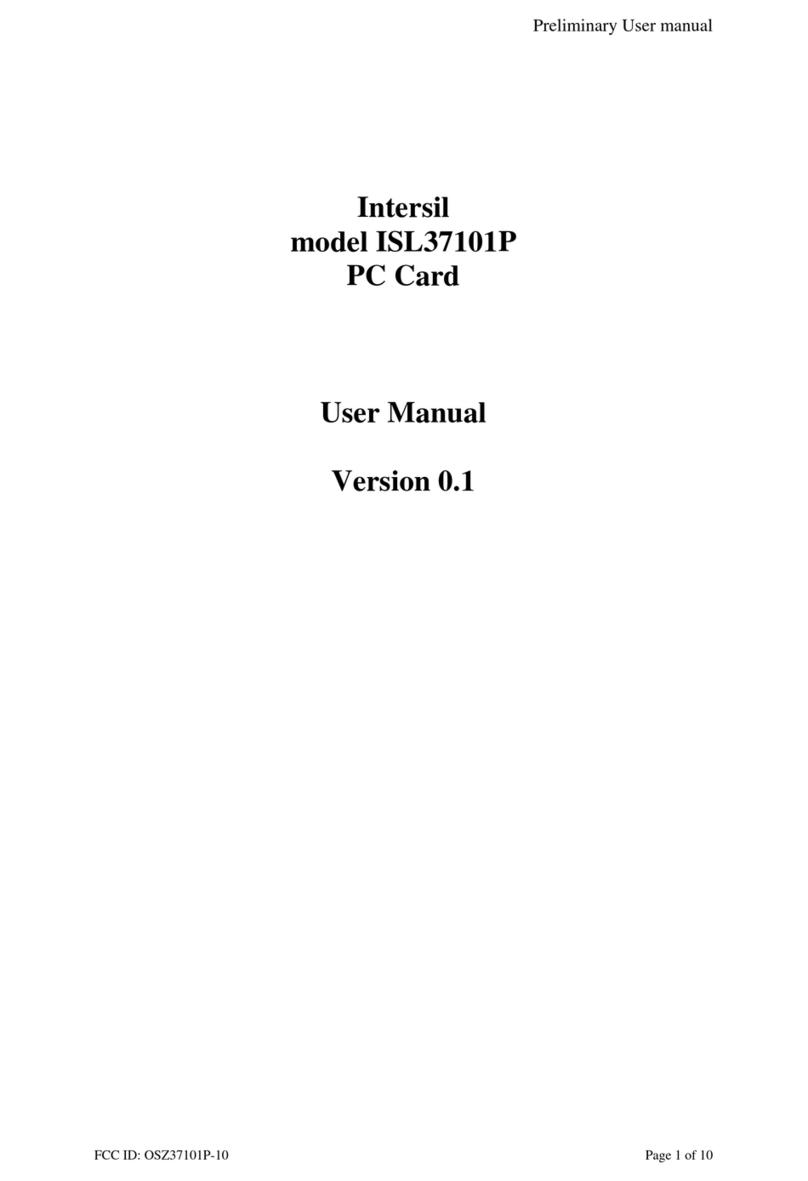
2August 3, 2010
AN1581.0
5. JP1 should be inserted only if the input fault MOSFET
Q1 is not used.
6. Apply input voltage to the VIN and GND post on the
top left corner of the ISL97671IRZ-EVAL Evaluation
Board.
7. Jumper JP3 should be in the right position and EN
signal from a 2.5V/3.3V logic supply connected to
the EN jumper, J5.
8. Jumper JP8A should be in the top position and PWM
signal from a function generator connected to the
PWMI jumper, J6.
9. Insert JP5A, JP6A and J3A.
10.To enable the board in SMBus mode, write a hex 05
in register 01; by writing a hex 01 in register 01 will
enable DPST (see data sheet FN7631 for more
details); writing a hex 03 in register 01 will allow
PWM dimming only.
11.For non-I2C control of ISL97671, remove the I2C
interface board, JP3A and ground J3(SCL post) and
J4 (SDA post). The board can now be controlled via
the EN and PWMI signal.
12.The LED current is calibrated to 20mA/channel,
which can be changed by measuring current across
JP7B and varying POT R15 by Equation 1:
The measured current divided by six is the LED
current per channel. For example, 120mA measured
current will correspond to 20mA/channel.
13.The PWM dimming frequency is calibrated to 200Hz
on this evaluation board but can be adjusted by
varying POT R11 by Equation 2:
14. ISL97671IRZ-EVAL Evaluation Board should be
powering 6P10S or 6P12S LED's.
ISL97672
1. Jumpers JP7B, JP8B, JP9, JP10, JP11, JP12 and JP13
should be inserted for LED's in 6P12S configuration.
2. Jumpers in line 1, plus JP14, JP15, JP16, JP17, JP18
and JP19 should be inserted for LED's in 6P10S
configuration.
3. Jumper JP8A inserted in top position.
4. Jumper JP3 should be in the right position.
5. JP1 should be inserted only if the input fault MOSFET
Q1 is not used.
6. Apply input voltage to the VIN and GND post on the
top left corner of the ISL97672IRZ-EVAL Evaluation
Board.
7. Apply a 2.5/3.3V signal to EN jumper, J5.
8. Apply a PWM signal from a function generator to
PWMI jumper, J6.
9. The LED current is calibrated to 20mA/channel
which can be changed by measuring current across
JP7B and varying POT R15 by Equation 3:
The measured current divided by six is the LED
current per channel. For example, 120mA measured
current will correspond to 20mA/channel.
10.The boost switching frequency is calibrated to
600kHz on this evaluation board but can be
adjusted by varying POT R11 by Equation 4:
11. At this point, the ISL97672IRZ-EVAL Evaluation
Board should be powering 6P10S or 6P12S LED's.
ISL97673
1. Jumpers JP7B, JP8B, JP9, JP10, JP11, JP12 and JP13
should be inserted for LED's in 6P12S configuration.
2. Jumpers in line 1, plus JP14, JP15, JP16, JP17, JP18
and JP19 should be inserted for LED's in 6P10S
configuration.
3. Jumpers JP3A, JP5A and JP6A are inserted.
4. Connect the I2C interface board to the ISL97673/4IRZ-
EVAL Evaluation Board, as shown in Figure 3.
ILED 401.8 R15
⁄=(EQ. 1)
FSW 6.66 107
×()R11
⁄=(EQ. 2)
ILED 401.8 R15
⁄=(EQ. 3)
FSW 510
10
×()R11
⁄=(EQ. 4)
FIGURE 3. I2C INTERFACE BOARD CONNECTED TO ISL97673IRZ-EVAL EVALUATION BOARD
Application Note 1581
